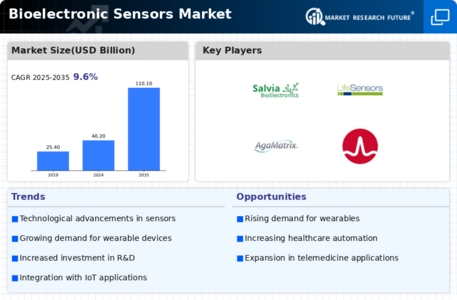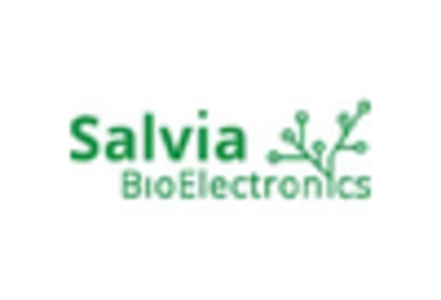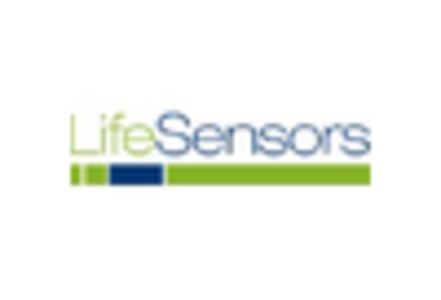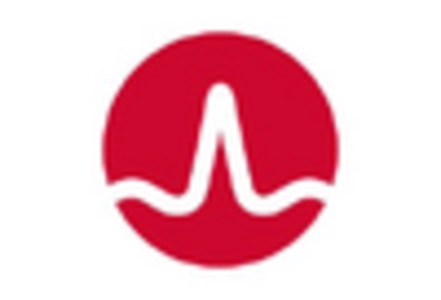-
Executive summary
-
Market Introduction
-
2.1.
-
Definition
-
Scope of the Study
- Research Objective
- Limitations
-
2.2.2.
-
Assumptions
-
Research Methodology
-
Overview
-
Data Mining
-
Secondary Research
-
Primary Research
- Breakdown of Primary
-
3.4.1.
-
Primary Interviews and Information Gathering Process
-
Respondents
-
Forecasting Model
-
Market Size Estimation
- Top-Down Approach
-
3.6.1.
-
Bottom-Up Approach
-
Data Triangulation
-
Validation
-
Market Dynamics
-
Overview
-
Drivers
-
Restraints
-
Opportunities
-
Market Factor Analysis
-
5.1.
-
Value Chain Analysis
-
Porter’s Five Forces Analysis
- Bargaining
- Bargaining Power of Buyers
- Threat of
- Threat of Substitutes
- Intensity of Rivalry
-
Power of Suppliers
-
New Entrants
-
COVID-19 Impact Analysis
- Market Impact Analysis
- Regional
- Opportunity and Threat Analysis
-
Impact
-
GLOBAL BIOELECTRONIC
-
SENSORS MARKET,BY Type
-
Overview
-
Bio-Electronic Devices
-
6.3.
-
Bio-Electronic Medicine
-
GLOBAL BIOELECTRONIC SENSORS MARKET,BY Product
-
Overview
-
Electrochemical Biosensors
-
Piezoelectric Biosensors
-
Thermal Biosensors
-
Optical Biosensors
-
GLOBAL BIOELECTRONIC
-
SENSORS MARKET,BY Application
-
Overview
-
Biochips
-
Implantable
-
Devices
-
Prosthetics
-
Artificial organs
-
Molecular Motors
-
Others
-
GLOBAL BIOELECTRONIC SENSORS MARKET, by Region
-
Overview
-
North America
- US
- Canada
-
Europe
- France
- UK
- Italy
- Spain
- Rest of Europe
-
9.2.1.
-
Germany
-
Asia-Pacific
- China
- India
- Japan
- South Korea
- Australia
- Rest of
-
Asia-Pacific
-
Rest of the World
- Middle East
- Africa
- Latin America
-
Competitive Landscape
-
Overview
-
10.2.
-
Competitive Analysis
-
Market Share Analysis
-
Major Growth Strategy
-
in the Global Bioelectronic Sensors Market,
-
Competitive Benchmarking
-
Leading Players in Terms of Number of Developments in the Global Bioelectronic
-
Sensors Market,
-
Key developments and Growth Strategies
- New
- Merger &Acquisitions
-
ProductLaunch/Service Deployment
-
10.7.3.
-
Joint Ventures
-
Major Players Financial Matrix
- Sales &
- Major Players R&D Expenditure.2025
-
Operating Income,2025
-
11.
-
Company ProfileS
-
Bioelectronics Corporation
- Company Overview
- Financial Overview
- Products Offered
- Key Developments
- SWOT Analysis
- Key Strategies
-
Nova Biomedical Corporation
- Company Overview
- Financial Overview
- Products
- Key Developments
- SWOT Analysis
- Key
-
Offered
-
Strategies
-
Medtronic Plc
- Company Overview
- Financial
- Products Offered
- Key Developments
- Key Strategies
-
Overview
-
11.3.5.
-
SWOT Analysis
-
Sensirion AG
- Company
- Financial Overview
- Products Offered
- SWOT Analysis
- Key Strategies
- Company Overview
- Financial Overview
- Products Offered
- Key Developments
- SWOT Analysis
- Key Strategies
-
Overview
-
11.4.4.
-
Key Developments
-
11.5.
-
F. Hoffmann-La Roche Ltd
-
Bayer A.G
- Company Overview
- Products Offered
- Key Developments
- SWOT Analysis
- Key Strategies
-
11.6.2.
-
Financial Overview
-
Abbott
- Financial Overview
- Products Offered
- Key Developments
- SWOT Analysis
- Key Strategies
-
11.7.1.
-
Company Overview
-
SIEMENS AG
- Company Overview
- Financial Overview
- Products Offered
- Key Developments
- SWOT Analysis
- Key Strategies
-
Salvia Bioelectronics
- Company Overview
- Financial Overview
- Products Offered
- Key Developments
- SWOT Analysis
- Key Strategies
-
LifeSensors
- Financial Overview
- Products Offered
- Key Developments
- SWOT Analysis
- Key Strategies
-
11.10.1.
-
Company Overview
-
OmniVision Technologies Inc
- Company Overview
- Products Offered
- Key Developments
- SWOT Analysis
- Key Strategies
-
11.11.2.
-
Financial Overview
-
AgaMatrix Inc.
- Company Overview
- Financial Overview
- Products
- Key Developments
- SWOT Analysis
-
Offered
-
11.12.6.
-
Key Strategies
-
11.12.7.
-
Broadcom Inc
- Company Overview
- Financial Overview
- Products Offered
- Key Developments
- SWOT Analysis
- Key Strategies
-
Sotera Wireless
- Company Overview
- Financial Overview
- Products
- Key Developments
- SWOT Analysis
-
Offered
-
11.14.6.
-
Key Strategies
-
Omnivision Technologies
- Company Overview
- Financial Overview
- Products Offered
- Key Developments
- SWOT Analysis
- Key Strategies
-
Appendix
-
12.1.
-
References
-
Related Reports
-
LIST OF TABLES
-
Global
-
Bioelectronic Sensors Market, Synopsis, 2025-2034
-
Global Bioelectronic
-
Sensors Market, Estimates &Forecast, 2025-2034(USD BILLION)
-
GLOBAL
-
BIOELECTRONIC SENSORS MARKET,BY Type, 2025-2034 (USD BILLION)
-
GLOBAL
-
BIOELECTRONIC SENSORS MARKET,BY Product, 2025-2034 (USD BILLION)
-
GLOBAL
-
BIOELECTRONIC SENSORS MARKET,BY Application, 2025-2034 (USD BILLION)
-
TABLE
-
North America: BIOELECTRONIC SENSORS MARKET,BY Type, 2025-2034 (USD BILLION)
-
North America: BIOELECTRONIC SENSORS MARKET,BY Product, 2025-2034 (USD
-
BILLION)
-
North America: BIOELECTRONIC SENSORS MARKET,BY Application,
-
US: BIOELECTRONIC SENSORS MARKET,BY Type, 2025-2034
-
(USD BILLION)
-
US: BIOELECTRONIC SENSORS MARKET,BY Product, 2025-2034
-
(USD BILLION)
-
US: BIOELECTRONIC SENSORS MARKET,BY Application, 2025-2034
-
(USD BILLION)
-
Canada: BIOELECTRONIC SENSORS MARKET,BY Type, 2025-2034
-
(USD BILLION)
-
Canada: BIOELECTRONIC SENSORS MARKET,BY Product, 2025-2034
-
(USD BILLION)
-
Canada: BIOELECTRONIC SENSORS MARKET,BY Application,
-
Europe: BIOELECTRONIC SENSORS MARKET,BY Type,
-
Europe: BIOELECTRONIC SENSORS MARKET, BY Product,
-
Europe: BIOELECTRONIC SENSORS MARKET, BY Application,
-
germany: BIOELECTRONIC SENSORS MARKET,BY Type,2025-2034
-
(USD BILLION)
-
germany: BIOELECTRONIC SENSORS MARKET, BY Product, 2025-2034
-
(USD BILLION)
-
germany: BIOELECTRONIC SENSORS MARKET, BY Application,
-
FRANCE: BIOELECTRONIC SENSORS MARKET,BY Type,
-
FRANCE: BIOELECTRONIC SENSORS MARKET, BY Product,
-
FRANCE: BIOELECTRONIC SENSORS MARKET, BY Application,
-
italy: BIOELECTRONIC SENSORS MARKET,BY Type,
-
italy: BIOELECTRONIC SENSORS MARKET, BY Product,
-
italy: BIOELECTRONIC SENSORS MARKET, BY Application,
-
spain: BIOELECTRONIC SENSORS MARKET,BY Type,
-
spain: BIOELECTRONIC SENSORS MARKET, BY Product,
-
spain: BIOELECTRONIC SENSORS MARKET, BY Application,
-
UK: BIOELECTRONIC SENSORS MARKET,BY Type,
-
UK: BIOELECTRONIC SENSORS MARKET, BY Product,
-
UK: BIOELECTRONIC SENSORS MARKET, BY Application,
-
rest of europe: BIOELECTRONIC SENSORS MARKET,BY
-
Type, 2025-2034 (USD BILLION)
-
rest of europe: BIOELECTRONIC SENSORS
-
MARKET, BY Product, 2025-2034 (USD BILLION)
-
rest of europe: BIOELECTRONIC
-
SENSORS MARKET, BY Application, 2025-2034 (USD BILLION)
-
Asia-Pacific:
-
BIOELECTRONIC SENSORS MARKET,BY Type, 2025-2034 (USD BILLION)
-
Asia-Pacific:
-
BIOELECTRONIC SENSORS MARKET, BY Product, 2025-2034 (USD BILLION)
-
TABLE 24
-
Asia-Pacific: BIOELECTRONIC SENSORS MARKET, BY Application, 2025-2034 (USD BILLION)
-
japan: BIOELECTRONIC SENSORS MARKET,BY Type, 2025-2034 (USD BILLION)
-
japan: BIOELECTRONIC SENSORS MARKET, BY Product, 2025-2034 (USD BILLION)
-
japan: BIOELECTRONIC SENSORS MARKET, BY Application, 2025-2034 (USD BILLION)
-
china: BIOELECTRONIC SENSORS MARKET,BY Type, 2025-2034 (USD BILLION)
-
china: BIOELECTRONIC SENSORS MARKET, BY Product, 2025-2034 (USD BILLION)
-
china: BIOELECTRONIC SENSORS MARKET, BY Application, 2025-2034 (USD BILLION)
-
india: BIOELECTRONIC SENSORS MARKET,BY Type, 2025-2034 (USD BILLION)
-
india: BIOELECTRONIC SENSORS MARKET, BY Product, 2025-2034 (USD BILLION)
-
india: BIOELECTRONIC SENSORS MARKET, BY Application, 2025-2034 (USD BILLION)
-
australia: BIOELECTRONIC SENSORS MARKET,BY Type, 2025-2034 (USD BILLION)
-
australia: BIOELECTRONIC SENSORS MARKET, BY Product, 2025-2034 (USD BILLION)
-
australia: BIOELECTRONIC SENSORS MARKET, BY Application, 2025-2034 (USD
-
BILLION)
-
south korea: BIOELECTRONIC SENSORS MARKET,BY Type, 2025-2034
-
(USD BILLION)
-
south korea: BIOELECTRONIC SENSORS MARKET, BY Product,
-
south korea: BIOELECTRONIC SENSORS MARKET,
-
BY Application, 2025-2034 (USD BILLION)
-
rest of asia-pacific: BIOELECTRONIC
-
SENSORS MARKET,BY Type, 2025-2034 (USD BILLION)
-
rest of asia-pacific:
-
BIOELECTRONIC SENSORS MARKET, BY Product, 2025-2034 (USD BILLION)
-
TABLE 42
-
rest of asia-pacific: BIOELECTRONIC SENSORS MARKET, BY Application, 2025-2034 (USD
-
BILLION)
-
rest of the world: BIOELECTRONIC SENSORS MARKET,BY Type,
-
rest of the world: BIOELECTRONIC SENSORS MARKET,
-
BY Product, 2025-2034 (USD BILLION)
-
rest of the world: BIOELECTRONIC
-
SENSORS MARKET, BY Application, 2025-2034 (USD BILLION)
-
Middle east:
-
BIOELECTRONIC SENSORS MARKET,BY Type, 2025-2034 (USD BILLION)
-
Middle
-
east: BIOELECTRONIC SENSORS MARKET, BY Product, 2025-2034 (USD BILLION)
-
TABLE
-
Middle east: BIOELECTRONIC SENSORS MARKET, BY Application, 2025-2034 (USD BILLION)
-
Africa: BIOELECTRONIC SENSORS MARKET,BY Type, 2025-2034 (USD BILLION)
-
Africa: BIOELECTRONIC SENSORS MARKET, BY Product, 2025-2034 (USD BILLION)
-
Africa: BIOELECTRONIC SENSORS MARKET, BY Application, 2025-2034 (USD
-
BILLION)
-
Latin america: BIOELECTRONIC SENSORS MARKET,BY Type, 2025-2034
-
(USD BILLION)
-
Latin america: BIOELECTRONIC SENSORS MARKET, BY Product,
-
Latin america: BIOELECTRONIC SENSORS MARKET,
-
BY Application, 2025-2034 (USD BILLION)
-
LIST OF FIGURES
-
Research
-
Process
-
Market Structure for the Global Bioelectronic Sensors Market
-
Market Dynamics for the Global Bioelectronic Sensors Market
-
FIGURE
-
Global Bioelectronic Sensors Market, Share (%), BY Type, 2025
-
Global
-
Bioelectronic Sensors Market, Share (%), BY Product, 2025
-
Global Bioelectronic
-
Sensors Market, Share (%), BY Application, 2025
-
Global Bioelectronic
-
Sensors Market, Share (%), by Region, 2025
-
north AMERICA: BIOELECTRONIC
-
SENSORS MARKET, SHARE (%), BY REGION, 2025
-
Europe: BIOELECTRONIC SENSORS
-
MARKET, SHARE (%), BY REGION, 2025
-
Asia-Pacific: BIOELECTRONIC SENSORS
-
MARKET, SHARE (%), BY REGION, 2025
-
Rest of the world: BIOELECTRONIC
-
SENSORS MARKET, SHARE (%), BY REGION, 2025
-
Global Bioelectronic Sensors
-
Market: Company Share Analysis, 2025 (%)
-
Bioelectronics Corporation:
-
FINANCIAL OVERVIEW SNAPSHOT
-
Bioelectronics Corporation: SWOT ANALYSIS
-
NOVA BIOMEDICAL CORPORATION:FINANCIAL OVERVIEW SNAPSHOT
-
FIGURE
-
NOVA BIOMEDICAL CORPORATION:SWOT ANALYSIS
-
Medtronic Plc:FINANCIAL
-
OVERVIEW SNAPSHOT
-
Medtronic Plc:SWOT ANALYSIS
-
Sensirion
-
AG: FINANCIAL OVERVIEW SNAPSHOT
-
Sensirion AG:SWOT ANALYSIS
-
FIGURE
-
F. HOFFMANN-LA ROCHE LTD.:FINANCIAL OVERVIEW SNAPSHOT
-
F. HOFFMANN-LA
-
ROCHE LTD.:SWOT ANALYSIS
-
Bayer A.G:FINANCIAL OVERVIEW SNAPSHOT
-
Bayer A.G:SWOT ANALYSIS
-
Abbott: FINANCIAL OVERVIEW SNAPSHOT
-
Abbott: SWOT ANALYSIS
-
SIEMENS AG: FINANCIAL OVERVIEW
-
SNAPSHOT
-
SIEMENS AG: SWOT ANALYSIS
-
Salvia Bioelectronics:
-
FINANCIAL OVERVIEW SNAPSHOT
-
Salvia Bioelectronics: SWOT ANALYSIS
-
LifeSensors:FINANCIAL OVERVIEW SNAPSHOT
-
LifeSensors:SWOT
-
ANALYSIS
-
OmniVision Technologies Inc. OVERVIEW SNAPSHOT
-
FIGURE
-
OmniVision Technologies Inc.:SWOT ANALYSIS
-
AgaMatrix Inc OVERVIEW
-
SNAPSHOT
-
AgaMatrix Inc:SWOT ANALYSIS
-
Broadcom Inc
-
OVERVIEW SNAPSHOT
-
Broadcom Inc:SWOT ANALYSIS
-
Sotera
-
Wireless OVERVIEW SNAPSHOT
-
Sotera Wireless:SWOT ANALYSIS
-
FIGURE
-
Omnivision Technologies OVERVIEW SNAPSHOT
-
Omnivision Technologies:SWOT
-
ANALYSIS







Leave a Comment